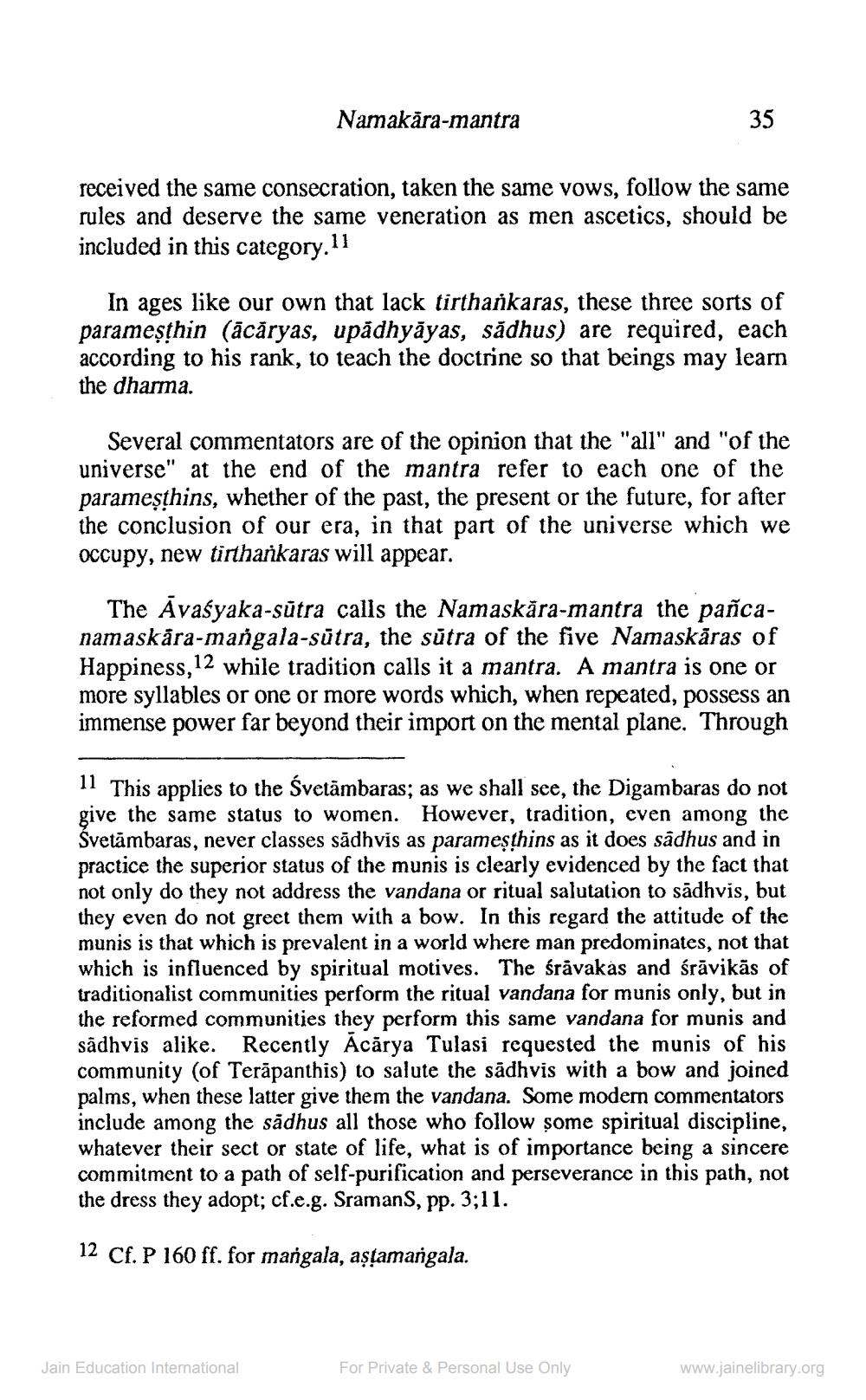________________
Namakāra-mantra
35
received the same consecration, taken the same vows, follow the same rules and deserve the same veneration as men ascetics, should be included in this category.11
In ages like our own that lack tirthankaras, these three sorts of parameşthin (ācăryas, upadhyāyas, sådhus) are required, each according to his rank, to teach the doctrine so that beings may learn the dharma.
Several commentators are of the opinion that the "all" and "of the universe" at the end of the mantra refer to each one of the parameşthins, whether of the past, the present or the future, for after the conclusion of our era, in that part of the universe which we occupy, new tirtharkaras will appear.
The Avašyaka-sūtra calls the Namaskåra-mantra the pañcanamaskara-mangala-sutra, the sutra of the five Namaskāras of Happiness, 12 while tradition calls it a mantra. A mantra is one or more syllables or one or more words which, when repeated, possess an immense power far beyond their import on the mental plane. Through
11 This applies to the Śvetāmbaras; as we shall see, the Digambaras do not give the same status to women. However, tradition, even among the Svetāmbaras, never classes sādhvis as parameşthins as it does sådhus and in
ce the superior status of the munis is clearly evidenced by the fact that not only do they not address the vandana or ritual salutation to sādhvis, but they even do not greet them with a bow. In this regard the attitude of the munis is that which is prevalent in a world where man predominates, not that which is influenced by spiritual motives. The śrävakas and śrāvikās of traditionalist communities perform the ritual vandana for munis only, but in the reformed communities they perform this same vandana for munis and sādhvis alike. Recently Acārya Tulasi requested the munis of his community (of Terapanthis) to salute the sadhvis with a bow and joined palms, when these latter give them the vandana. Some modern commentators include among the sadhus all those who follow some spiritual discipline, whatever their sect or state of life, what is of importance being a sincere commitment to a path of self-purification and perseverance in this path, not the dress they adopt; cf.e.g. Sramans, pp. 3;11.
12 Cf. P 160 ff. for mangala, aştamangala.
Jain Education International
For Private & Personal Use Only
www.jainelibrary.org




